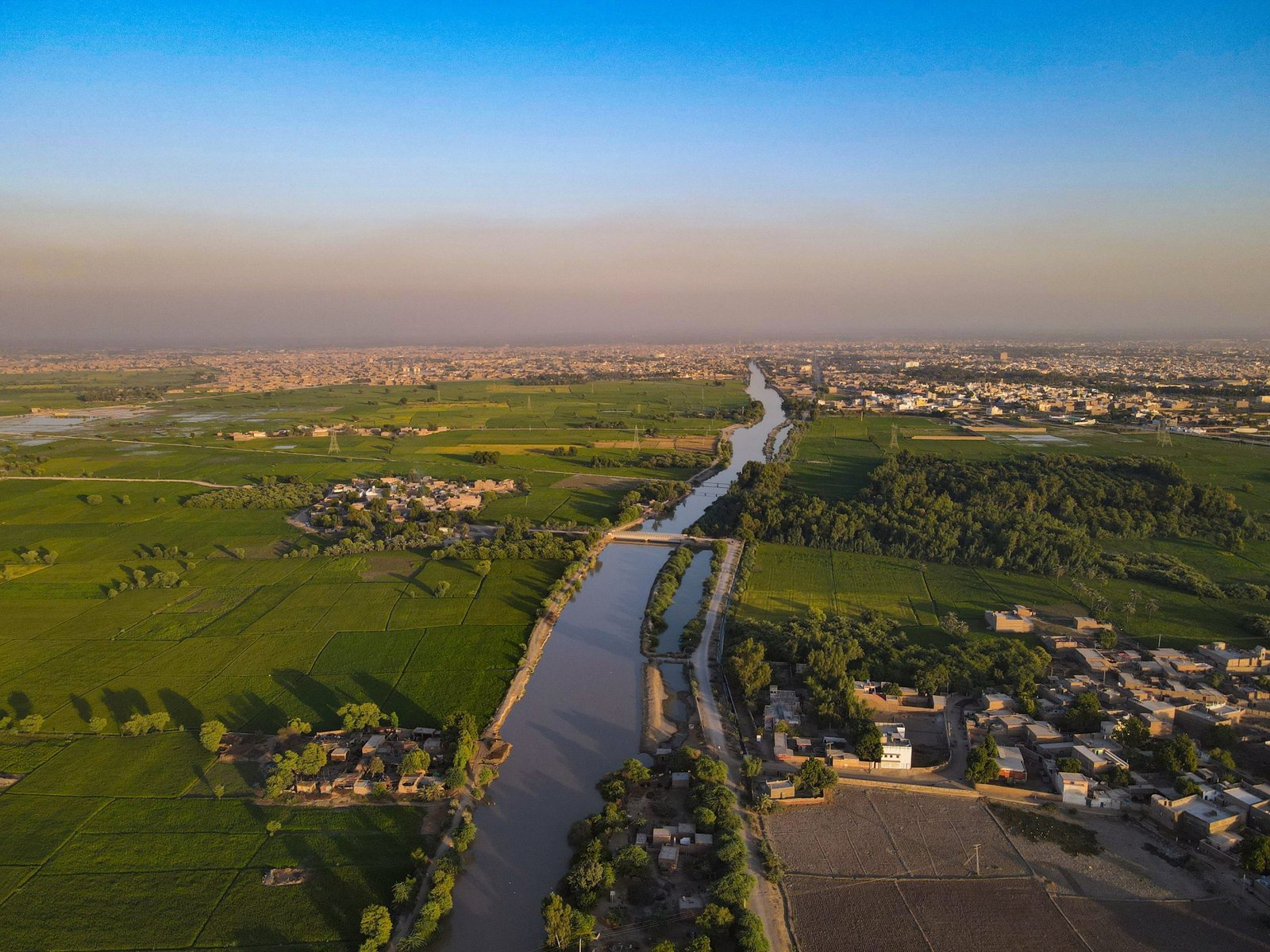
Larkana is an ancient city with a rich cultural heritage located in the province of Sindh, Pakistan. With a population of around 500,000, Larkana is the fourth largest city in Sindh and is known for its archaeological sites and historical significance. This research blog will explore some fascinating facts about Larkana, from its history and culture to its geography and economy.
History of Larkana
Larkana city is located in the north-western part of the Sindh province in Pakistan. It has a rich and diverse history that spans thousands of years. The city is believed to have been inhabited since prehistoric times and has been ruled by various empires and dynasties throughout history. Here is a brief overview of the history of Larkana city:
- Prehistoric Times : Larkana has a rich prehistoric history and is home to the ruins of Mohenjo-Daro, one of the most important archaeological sites in the world. The Mohenjo-Daro ruins date back to the Indus Valley Civilization, which flourished in the region between 2600 BCE and 1900 BCE.
- Ancient Times : Larkana was also an important city during the rule of the Mauryan Empire in the 3rd century BCE. The city was known as Chandrakanti at that time and was an important center of trade and commerce.
- Islamic Period : In the 8th century CE, the Arab armies led by Muhammad bin Qasim conquered the region and introduced Islam. Larkana became an important center of Islamic learning and scholarship during the Abbasid Caliphate.
- British Rule : Larkana became a part of the British Empire in 1843 after the defeat of the Talpur Mirs, who had ruled the region since the 18th century. The British established a railway station in Larkana, which boosted trade and transportation.
- Post-Independence : After the partition of India in 1947, Larkana became a part of Pakistan. The city played an important role in the country’s politics, and the Pakistan Peoples Party (PPP), one of the major political parties in the country, was founded in Larkana by Zulfikar Ali Bhutto.
Today, Larkana is a vibrant city with a rich cultural heritage and a growing economy. The city's historical and archaeological sites, including the Mohenjo-Daro ruins, attract visitors from all over the world. The city's economy is primarily based on agriculture, with cotton and rice being the major crops. Larkana is also a major producer of dates grown in the surrounding desert areas.
In addition, the city is undergoing several new developments to enhance its infrastructure and economy, making it an attractive destination for investment and tourism.
Geography of Larkana
Larkana district is located in the north-western part of the Sindh province in Pakistan. The city covers an area of 3,527 square kilometers and is situated at an altitude of 48 meters above sea level. The city is located on the right bank of the Indus River, the largest river in Pakistan, and is considered to be the lifeline of the country.
Larkana is surrounded by desert and semi-desert areas known for their extreme temperatures and arid landscapes. The climate in Larkana is hot and dry, with temperatures ranging from 25°C to 45°C during the summer months. On the other hand, the winter season is mild, with temperatures ranging from 10°C to 25°C.
The city is located at the intersection of several major transportation routes, including the Indus Highway, which connects Larkana to the neighboring cities of Sukkur and Hyderabad, and the National Highway, which connects the city to Karachi, the largest city in Pakistan.
Larkana is primarily an agricultural region, with cotton and rice being the major crops. The city is also a major producer of dates grown in the surrounding desert areas. In addition, the city is home to several industries, including textile manufacturing, agriculture, and pharmaceuticals. The Indus River, which flows through Larkana, is an important source of water for irrigation and agriculture. The river also provides opportunities for fishing and other recreational activities.
Overall, the geography of Larkana is characterized by its arid landscapes, extreme temperatures, and the presence of the Indus River, which plays an important role in the city's economy and transportation.
Culture of Larkana
Larkana is a city in the Sindh province of Pakistan with a rich and diverse culture influenced by the Indus Valley Civilization, the Islamic period, and the British colonial era. The city has a long history of cultural diversity, reflected in its architecture, music, dance, art, and cuisine.
Architecture: Larkana is home to several architectural wonders, including the Mohenjo-Daro ruins, which date back to the Indus Valley Civilization. The ruins feature intricate designs and patterns that provide a glimpse into the city's ancient culture. The city also has several mosques, shrines, and tombs that showcase Islamic architecture.
Music and Dance: The city has a rich musical tradition, with classical music and folk songs being popular genres. The Larkana region is known for its Sufi music, a form of devotional music performed at Sufi shrines. The city is also known for its traditional dance forms, including the Larkana Dhamaal, performed at Sufi shrines during religious festivals.
Art: Larkana is home to several talented artists who create traditional and contemporary art. The city is known for its handicrafts, including pottery, woodcarving, and weaving. The Larkana region is also famous for its Ajrak, a traditional block-printed fabric worn by men and women.
Cuisine: The Larkana region is known for its delicious and spicy food, which includes a variety of dishes such as Sindhi Biryani, Kebabs, and Saag. The city is also famous for its desserts, including the traditional sweet dish called Sohan Halwa.
Religious Festivals: Larkana is home to several religious festivals that are celebrated with great zeal and enthusiasm. The Urs of Hazrat Lal Shahbaz Qalandar, a Sufi saint, is one of the most important festivals in the city. The festival is celebrated with music, dance, and a procession that carries the saint's shrine to the nearby city of Sehwan Sharif.
The culture of Larkana is a vibrant mix of ancient and modern traditions. The city's rich history, diverse population, and cultural heritage make it an important center of art, music, and cuisine in Pakistan.
Economy of Larkana
Larkana is primarily an agricultural city, with agriculture being the backbone of the local economy. The city is known for its fertile lands and is a major producer of crops like cotton, wheat, sugarcane, and rice. As a result, agriculture employs a significant portion of the population and is the primary source of income for most people in the city.
Apart from agriculture, Larkana has several other industries that contribute to the local economy. The city's textile industry produces fabrics and garments sold in local and international markets. The city is also home to a pharmaceutical industry that produces a variety of medicines and healthcare products.
The government of Pakistan has also launched several development projects in Larkana to improve the infrastructure and promote economic growth. These include the construction of new roads, bridges, and hospitals and the establishment of industrial zones to attract new businesses to the city.
Education in Larkana
Larkana, a major city in the Sindh province of Pakistan, has a significant number of educational institutions that cater to the needs of students of all ages. The city has a long history of educational excellence, with several notable institutions that have produced some of the most prominent figures in various fields.
Larkana has several universities and colleges that offer undergraduate and graduate degrees in various fields. The most prominent of these is the Shaheed Mohtarma Benazir Bhutto Medical University, a public medical university offering undergraduate and postgraduate programs in medicine, dentistry, nursing, and allied health sciences.
Aside from the medical university, Larkana has several other colleges and universities offering degrees in fields such as engineering, business, and social sciences. These include the Government Degree College Larkana, the Government Polytechnic Institute Larkana, and the Shaheed Zulfikar Ali Bhutto Institute of Science and Technology.
The city also has several madrasas, or Islamic religious schools, that educate students who wish to pursue religious studies. These madrasas offer a range of courses in Islamic studies and the Arabic language.
Tourism in Larkana
Larkana is a city in the Sindh province of Pakistan that is rich in history and culture, making it a popular destination for tourists worldwide. The city has several landmarks and attractions that offer visitors a glimpse into the region's ancient and modern history.
One of Larkana's most popular tourist attractions is the Mohenjo-Daro archaeological site, which dates back to the Indus Valley Civilization. The ruins feature intricate designs and patterns that provide a glimpse into the city's ancient culture. The site is a UNESCO World Heritage Site and is considered one of South Asia's most important archaeological sites.
Another popular attraction in Larkana is the Naudero House, the birthplace of the former Pakistani Prime Minister, Zulfiqar Ali Bhutto. The house has been converted into a museum that showcases the life and achievements of the late Prime Minister. The museum houses photographs, artifacts, and other memorabilia from Bhutto's life.
The city also has several religious landmarks popular among tourists, including the Shahi Mosque and the Hazrat Lal Shahbaz Qalandar shrine. The Shahi Mosque is one of the oldest mosques in Pakistan and is known for its beautiful architecture. The shrine of Hazrat Lal Shahbaz Qalandar is an important Sufi shrine that attracts devotees from all over the world.
Apart from historical and religious landmarks, Larkana also has several parks and recreational areas that are popular among tourists. The Naudero Park and the Jinnah Bagh are two of the most popular parks in the city. Both parks offer a serene environment where visitors can relax and enjoy the natural beauty of the surroundings.
The city's cuisine is also a major draw for tourists. Larkana is known for its spicy and flavorful food, with Sindhi Biryani, Kebabs, and Saag being popular dishes. The city is also famous for its desserts, including the traditional sweet dish called Sohan Halwa.
The government of Pakistan has also launched several development projects in Larkana to promote tourism and improve the infrastructure. These include the construction of new roads, hotels, and other facilities to cater to the needs of tourists.
Politics in Larkana
Larkana district is situated in the Sindh province, which has traditionally been a stronghold of the Pakistan Peoples Party (PPP). This political party has dominated the political landscape of the province for decades.
The late Zulfikar Ali Bhutto, the founder of the PPP and former Prime Minister of Pakistan, was born in Larkana, contributing to the city's association with the party. In addition, the city has produced several other prominent politicians who have played important roles in shaping the politics of the province and the country.
Larkana is represented in the National Assembly of Pakistan by two members, who are elected by the citizens of the city. The city is also represented in the Sindh Provincial Assembly, which makes laws and regulations that affect the province.
A complex web of alliances and rivalries between political parties and interest groups marks the political landscape of Larkana. The PPP has traditionally been the dominant political force in the city, with its support base extending to other parts of the province.
However, in recent years, there has been an increase in the influence of other political parties, such as the Pakistan Muslim League-Nawaz (PML-N) and the Muttahida Qaumi Movement-Pakistan (MQM-P). These parties have made inroads in the city by targeting specific constituencies and building alliances with local power brokers.
Politics in Larkana, as in the rest of Pakistan, is also influenced by various social, economic, and cultural factors. For example, the city has a large rural population that is heavily dependent on agriculture and is often marginalized in the political process. The urban population, on the other hand, is more politically active and has greater access to resources and opportunities.
What new developments are taking place in the growing city of Larkana?
Larkana-Khairpur Bypass: The Larkana-Khairpur Bypass is a new highway that is currently under construction. The highway will connect Larkana with the neighboring city of Khairpur, reducing travel time and boosting trade and transportation.
Larkana-Moenjodaro Airport: The construction of a new airport in Larkana is underway, making it easier for tourists and visitors to access the city. The airport will also boost the city's economy by improving trade and transportation.
Industrial Zone: The government of Sindh is planning to establish an industrial zone in Larkana to promote economic growth and development. The industrial zone will provide job opportunities and boost the city's economy.
Education City: The government of Sindh is also planning to establish an Education City in Larkana, which will house several educational institutions, including universities, colleges, and schools. The Education City will provide quality education to the youth of Larkana and boost the city's economy.
Smart City: The government of Sindh is planning to transform Larkana into a smart city by introducing advanced technologies to improve the city's infrastructure and services. The smart city project will include the installation of CCTV cameras, smart traffic lights, and other advanced technologies to improve the city's security and efficiency.
These new developments show that Larkana is moving towards a brighter future, with improved infrastructure and a growing economy. The city's rich cultural heritage and historical significance, combined with these new developments, make Larkana an attractive destination for investment and tourism.
Conclusion
Larkana is a city with a rich cultural heritage and historical significance. From its ancient archaeological sites and vibrant music scene to its strong political connections and agricultural economy, Larkana is a city that is worth exploring. With its friendly people and welcoming culture, Larkana is a great place to visit and experience the Sindhi way of life.



